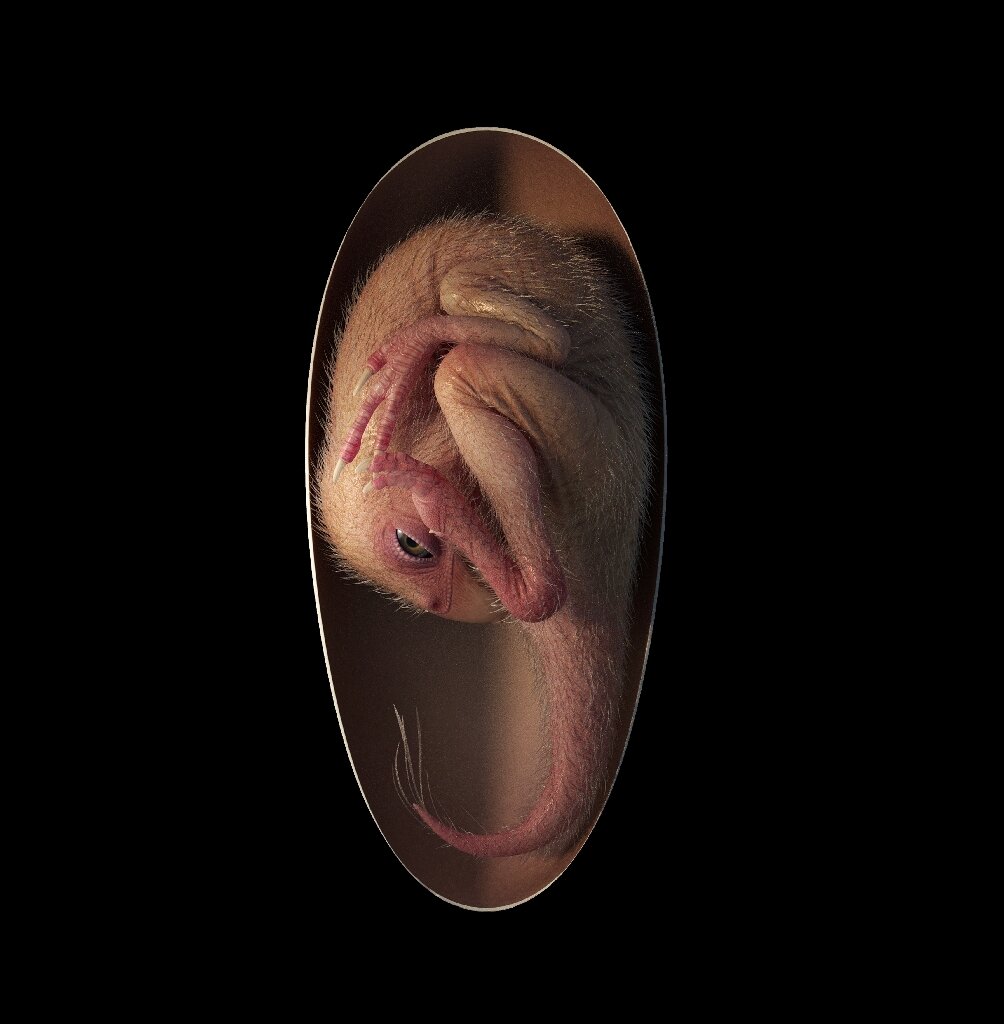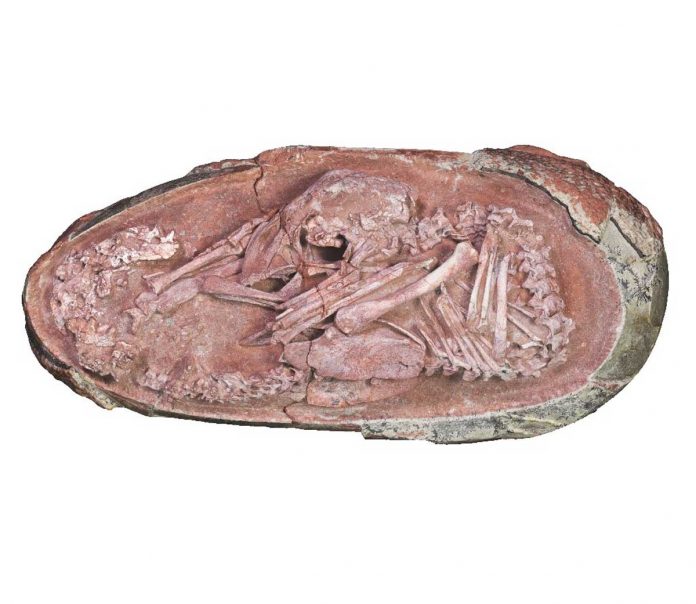Scientists discovered an exquisitely preserved dinosaur embryo from 66 million years ago. It was preparing to hatch from its egg just like a chicken. The fossil was discovered in Ganzhou, southern China. It belongs to a toothless theropod dinosaur or oviraptorosaur. Scientists named it “Baby Yingliang.”
Scientists found Baby Yingliang’s head lay below its body and the feet on either side. Its back was curled. This posture was previously unseen in dinosaurs. But this is similar to modern birds.
Birds’ behaviour is controlled by the central nervous system. It is called “tucking.” Chicks tuck their head under their right wing in order to stabilize the head and they crack the shell with their beak.
Embryos that fail to tuck have a good chance of death from an unsuccessful hatching.
An alternative to tucking can be what we see in modern crocodiles. Crocodiles instead assume a sitting posture with the head bending upon the chest up to hatching.

Forgotten in storage
Oviraptorosaurs means “egg thief lizards”. It was a feathered dinosaur that lived in what is now Asia and North America during the Late Cretaceous period.
This dinosaur had variable beak shapes and diets. It ranged in size from modern turkeys at the lower end to massive Gigantoraptors. It was eight meters long.
Baby Yingliang was 27 centimeters long from head to tail. It lies inside a 17-centimeter-long egg at the Yingliang Stone Nature History Museum.
Scientists think the creature is between 72 and 66 million years old. They think it was preserved by a sudden mudslide that buried the egg. This protected the egg from scavengers for eons.
It would have grown two to three meters long if it had lived. It would have likely fed on plants.
It was one of several egg fossils that were forgotten in storage for decades.
The team of scientists think they might contain unborn dinosaurs.

